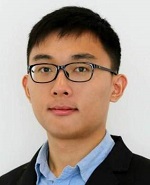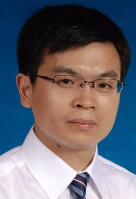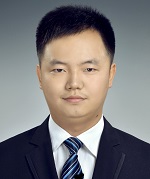Special Session: Potential Waveform and Transceiver Design for Integrated Sensing and Communication
Waveform design for Integrated Sensing and Communication (ISAC) focuses on the dual-purpose design of waveforms and transceiver design that simultaneously support communication and sensing tasks. This session explores various waveform candidates, including Orthogonal Frequency Division Multiplexing (OFDM), Orthogonal Time Frequency Space (OTFS), Affine Frequency Division Multiplexing (AFDM), and their transceiver designs, for enhancing the performance of ISAC systems. Besides, this session also explores new waveform design for ISAC, including information theoretical aspect, design criteria, design methods, as well as the corresponding transceiver designs. Special attention will be given to waveform adaptations to support multi-functional networks in 6G.
Integrated sensing and communication (ISAC) has been recognized as an important usage scenario of 6G where sensing and communication functionalities are possibly jointly designed, optimized, and allocated to share and assist each other. Dual-function waveform design plays a critical role for ISAC systems, enabling high-speed information delivery and accurate information acquisition using the same waveform, especially in dynamic environments, such as low-altitude wireless networks, relative navigation, and environment monitoring. Besides, transceiver design not only improves the resource utilization efficiency of ISAC but also facilitates high-reliable communication and high resolution sensing. This special session is particularly motivated by the growing demand for multifunctional systems in future 5G and 6G networks. Although ISAC has attracted wide attention from both academia and industry, there are still many unresolved problems in the aspects of waveform and transceiver design that need to be further studied. This workshop aims to unite researchers from academia and industry to delve into the latest breakthroughs in waveform and transceiver design for ISAC, thereby promoting their developments.
Related topics:
Important Dates:
Submission Deadline: March 25, 2026
Notification: April 25, 2026
Registration: May 10, 2026
Submit Method:
1, submit it via the link: http://www.easychair.org/conferences/?conf=icicsp2026 (after entering the link, click on the corresponding topic)
2, send your manuscript to icicsp@vip.163.com with subject "Submit+Special Session-12+Paper Title". (请通过邮件发送稿件,邮件题目:Submit+Special Session-12+Paper Title)
CHAIRMANS:

Zhiqiang Wei received the B.E. degree in information engineering from Northwestern Polytechnical University (NPU), Xi'an, China, in 2012, and the Ph.D. degree in electrical engineering and telecommunications from the University of New South Wales (UNSW), Sydney, Australia, in 2019. He is currently a Professor with the School of Mathematics and Statistics, Xi'an Jiaotong University, Xi'an, China. He is the founding co-chair (publications) of the IEEE ComSoc special interest group on OTFS (OTFS-SIG). He received the Best Paper Award at the IEEE ICC 2018 and IEEE WCNC 2023. He was the organizer/chair for several workshops and tutorials on related topics of orthogonal time frequency space (OTFS) in IEEE flagship conferences, including IEEE ICC, IEEE WCNC, IEEE VTC, and IEEE ICCC. He also co-authored the IEEE ComSoc Best Readings on OTFS and Delay Doppler Signal Processing. He has been listed in the World’s Top 2% Scientists by Stanford University for citation impact since 2021. He is now serving as the Associate Editor of the IEEE Open Journal of the Communications Society. His current research interests include delay-Doppler communications, resource allocation optimization, and statistical and array signal processing.

Fan Liu is currently a Professor with the School of Information Science and Engineering, Southeast University, Nanjing, China. He serves as the Founding Academic Chair of the IEEE Com Soc Integrated Sensing and Communications Emerging Technology Initiative (ISAC-ETI), Vice Chair of the IEEE SPS ISAC Technical Working Group (ISAC-TWG), and an Associate Editor of the IEEE Trans. Communications and IEEE Trans. Mobile Computing. He was a recipient of the 2024 IEEE SPS Best Paper Award, 2024 IEEE SPS Donald G. Fink Overview Paper Award, 2024 IEEE ComSoc Asia-Pacific Outstanding Paper Award, 2023 IEEE ComSoc Stephan O. Rice Prize, and 2021 IEEE SPS Young Author Best Paper Award.

Guanghui Liu received the M.Sc. and Ph.D. degrees in electronic engineering from the University of Electronic Science and Tech nology of China (UESTC), Chengdu, China, in 2002 and 2005, respectively. In 2005, he joined Samsung Electronics, South Korea, as a Senior Engineer. In 2009, he became an Associate Professor with the School of Electronics Engineering, UESTC, where he has been a Full Professor since 2014, and is currently with the School of Information and Communication Engineering. He has authored or coauthored over 100 papers in peer-reviewed journals and conferences, and filed over 60 patents (six U.S. granted patents) in the above areas. His research interests include digital signal processing and telecommunications, with emphasis on digital video processing and transmission, and AI for physical layer techniques. He was the recipient of the Natural Science Award and the Science and Technology Progress Award, both from Ministry of Education of China in 2015.

Xuejun Sha received the Ph.D. degree in communications and electronics systems from Harbin Institute of Technology, Harbin, China, in 1995. He was a Post-Doctoral Fellow with Korea University, Seoul, South Korea. He joined the Communication Research Center (CRC) as a Teaching Assistant in 1993, and became a Lecturer and a Professor in 1994 and 2000, respectively. He is currently a Professor with CRC, School of Electronics and Information Engineering, Harbin Institute of Technology. His current research focuses on physical layer dynamic networking methods, transmission systems, new waveform design, secure covert communication, and anti-jamming transmission.

Qin Tao received the B.S. degree from the Electronic Information School, Wuhan University, Wuhan, China, in 2017, and the Ph.D. degree in communication and information systems from Zhejiang University, Hangzhou, China, in 2022. Currently, she is an Associate Professor with the School of Information Science and Technology, Hangzhou Normal University, Hangzhou. Her research interests include backscatter communication, intelligent reflecting surface, symbiotic radio, and orthogonal time frequency space modulation. She and her co-authors have been awarded the Best Paper Award at the ICCC 2018, WCSP 2020, and WCSP 2023. Her doctoral dissertation was recognized as an Outstanding Doctoral Dissertation by the China Electronics Society in 2022. Dr. Tao has served as a reviewer for top-tier journals and conferences in her field and has organized special sessions as a TPC member and Co-Chair at IEEE journals and conferences.

Junyi Du received the B.E. and Ph.D. degrees in communication and information engineering from the University of Electronic Science and Technology of China (UESTC), Chengdu, China, in 2011 and 2017, respectively. He is currently the Deputy Director and Senior Engineer at the National Key Laboratory of Complex Aerospace System Simulation, the 10-th Research Institute of China Electronics Technology Group Corporation (CETC). His main research areas include channel coding and decoding design, as well as cluster self-organizing network communication systems. He has led four national-level innovation projects, published over 30 academic papers, and holds more than 10 authorized patents. He has received the First Prize for Technological Invention from CETC, as well as the First Prize in a competition organized by the Air Force.
